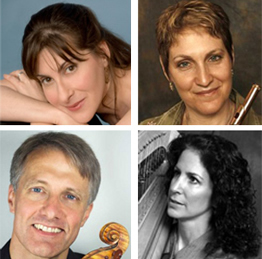If I am not mistaken this North Carolina Symphony concert was also marketed as “Passport to Argentina”, to accompany the “Passport to Hungary” from two weeks earlier, which might be closer to the mark than “Tango Nuevo.” One might rather think of the program as a tribute to composer Astor Piazzolla, who passed away almost twenty years ago (on July 4, 1992).
The program opened with a two-movement work, Last Round, for string orchestra (somehow a formation that seems to frequently elicit elegiac works) by Oswaldo Golijov, an Argentinean composer who studied and works in the USA (he did a doctorate at Penn with George Crumb, and holds a Professorship at Holy Cross in Worcester, Massachusetts). Golijov seemed to be riding the crest of a wave of popularity about a dozen years ago, when his name and works were everywhere. Since then his star has diminished somewhat. Last Round started as an unfinished sketch of the last movement (“Death of the Angels: Lentissimo”) written in reaction to the news of Piazzolla’s death, and completed, along with the new first movement, in 1996. The strings of the NCS were arrayed as a double orchestra, with violins and violas standing facing each other at the front of the stage, and the celli and bassi in the rear. The danger of writing an homage to a figure such as Piazzolla, who, let’s be honest about this, was not a composer of concert, but of popular music, is that of staying too close to the limited range of devices allotted to popular music, and indeed the first movement seemed like remixed clichés from Piazzolla. The slow concluding movement, in contrast, was entirely original, music that sounded like no one else, chords and modulations that were tragic, affecting, effective, gripping, the best work that I have heard from this composer.
The first half closed with the Concerto for Bandoneón, Strings and Percussion (1979) by Piazzolla, with soloist Coco Trivisonno. This was a rare opportunity to hear the bandoneón (the local development of the accordion in Buenos Aires) here in North Carolina, and the work made it evident just how much of the characteristic style of Piazzolla as a composer is tied to expressive possibilities (and limitations) of the instrument, which beyond Piazzolla, does not seem to have been the muse of other great composers (as for example, the piano or the guitar). The concerto, expertly played by soloist Trivisonno, was full of syncopation and sighing, and the sort of free rubato ornamentation that one might imagine belonged to the Italian heritage of Argentina.
The second half began with another homage to Piazzolla, by Australian-Jewish composer Elena Kats-Chernin (Re-collecting ASTORoids, a rather awkward title). Once more, the desire to evoke Piazzolla produced an extraordinary conservative idiom, a reworking of tango clichés with no new or different spices added, ultimately bland and forgettable, except, once again, for the closing epilogue, where the composer’s honesty and imagination made up for the earlier waste of time.
The listeners were treated, next, to a feast for the eyes – dancers Daniel Arredondo and Karen Jaffe interpreting the most famous of Piazzolla’s tangos, “Adios Nonino.”
The evening closed with an early ballet suite (Dances from Estancia, Op. 8a) from Alberto Ginastera, a wonderfully effective work (and beautifully played), which gave the sense that indeed there is a whole country and century of music from Argentina beyond the tango. The whiz-bang finale led to a lagniappe of Piazzolla, with the dancers performing once more.
Llewellyn and the NCS have been so successful in their recent programs of music from the last century that one wonders whether it would be too much to ask to hear a concert wholly of twenty-first century music soon. Here’s hoping.












